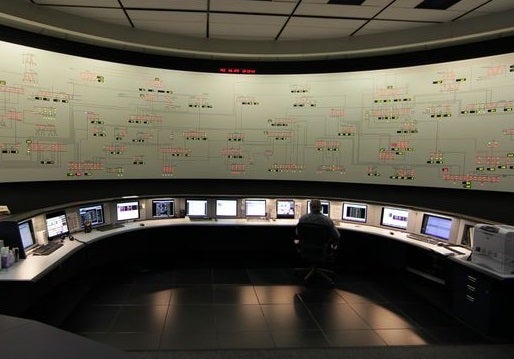Changing Times for Electric Utilities

Two seemingly unrelated announcements drew much attention in the electric utility industry recently. First, the Edison Electric Institute (EEI) (the trade group for the U.S. electric utility industry) and the Natural Resources Defense Council (NRDC) jointly recommended changing how utilities should be regulated. Second, Duke Energy announced it will sell 13 Midwest merchant power plants. These announcements are actually related because they both result from the same dramatic changes affecting the electric utility industry. As Bob Dylan aptly noted, “the times they are a-changin’.” Regulators and other stakeholders must be prepared to address these changes.
Under the traditional business model, electricity usage grew steadily. Utilities built ever-larger plants to serve this growing load. The bigger plants were more efficient than existing plants, so the unit cost for electricity steadily declined. Utilities benefited by steadily increasing their revenues. Customers benefited from declining unit costs. For utility customers, it was like paying a lower price per gallon of gasoline every time you filled your tank.
But this traditional model is crumbling, due to several factors:
- Load growth has declined, due to a slowing economy and greater use of renewable energy and energy efficiency.
- Utilities are no longer able to obtain economies of scale by building ever-larger plants.
- New regulations have resulted in higher costs for coal and nuclear plants.
- Plentiful supplies of shale gas have caused natural gas prices to decline.
- Utilities face high costs for grid modernization.
How did these changing conditions lead to the two recent announcements by EEI/NRDC and Duke Energy?
Market forces are changing the economics for legacy power plants
Duke plans to sell its 13 merchant power plants because of “the challenging competitive market in the Midwest.” These plants operate in the PJM wholesale market, one of the largest regional transmission organizations in the nation, where the average daily power price declined from $71.43 per megawatt-hour in 2008 to $37.50 per megawatt-hour in 2013. Additionally, these plants have a net book value of $3.5 billion (after calculating for depreciation), but their market value is only $1.5-2.5 billion.
Other companies with Midwest power plants are facing the same competitive pressures. Edison Mission Company, owner of four Illinois coal plants, filed for bankruptcy in December 2012 due to falling wholesale power prices and high costs for plant upgrades. Ameren sold its five Illinois coal plants and Dominion announced plans to close its Kewaunee, Wisconsin nuclear power plant in 2013. Exelon recently announced that it is considering shutting down its unprofitable nuclear plants, and will make its decision by the end of 2014. These plants have been unprofitable because of the changing industry conditions described above.
These changing conditions are forcing utilities to re-think their traditional business model, and this was the reason for the EEI/NRDC announcement. The EEI/NRDC plan follows earlier whitepapers on changing the utility business model by Rocky Mountain Institute, the Regulatory Assistance Project and the American Council for an Energy-Efficient Economy, and recommends several changes for regulating utilities, including:
- Requiring owners of distributed generation (on-site power generation, such as rooftop solar panels) and utilities to acknowledge the full costs and benefits of these systems;
- Giving utilities performance incentives for adopting more clean energy resources; and
- Ending the current link between utility revenues and the volume of energy sold.
These changes are intended to eliminate the utility’s current disincentives to save energy, and to incentivize them to deploy more clean energy while remaining financially sound. Regulators and stakeholders should prepare to address these changes.
How can they get it right?
A key factor for getting the utility business model right is correctly setting the rules for pricing distributed generation. Today many utilities use net metering to pay rooftop solar owners for the excess electricity the solar panels produce. The net metering rate is typically set at the full price the utility charges for electricity, or at the utility’s wholesale cost of electricity. Yet neither measure fully reflects the costs and benefits that rooftop solar provides to the electricity grid, so utilities are attempting to change the price in recent net metering cases in California, Arizona and Colorado.
Minnesota’s approach to pricing distributed generation is also noteworthy. A 2013 Minnesota law requires the Department of Commerce to establish a methodology for establishing the value of a solar tariff, as an alternative to net metering. The tariff would allow the utility to recover its full costs for supporting solar customers and would fully compensate solar owners for the value produced by solar distributed generation. The Minnesota Department of Commerce submitted its value of solar methodology to the public utilities commission for approval on January 31, 2014.
Regulators and stakeholders should also consider the option of incentive regulation to compensate utilities for supporting distributed generation. The United Kingdom has established an innovative new regulatory paradigm known as “RIIO” (Revenue = Incentives + Innovation + Outputs), which uses performance-based regulation to promote further deployment of clean energy. But some state public utility commissions in the U.S. currently may not have authority to approve performance-based rates and therefore may need legislation granting such authority.
Considering these issues will help regulators and stakeholders address the changing utility business model in their jurisdictions. Bob Dylan was right that, “the times, they are a-changin’.’” And the answer to a new utility business model is “blowin’ in the wind (and sun)” of distributed generation – meaning that the new model depends, in large part, on setting the correct pricing for distributed generation.










